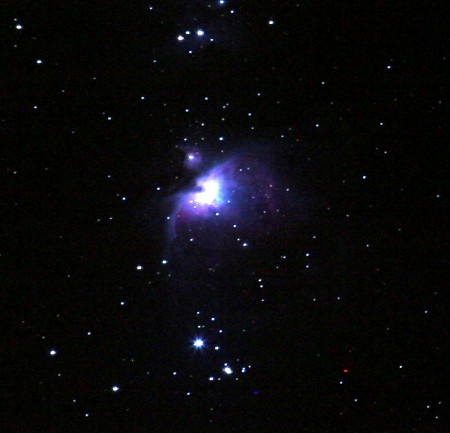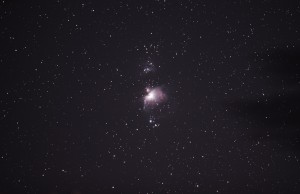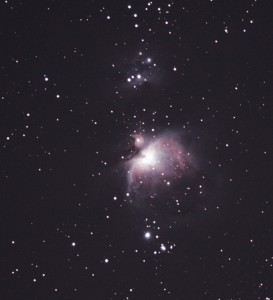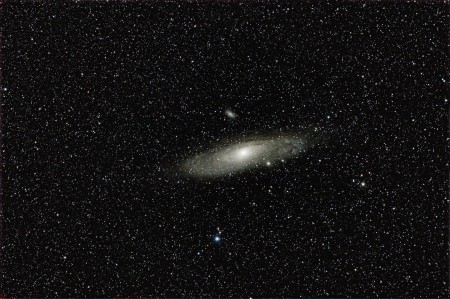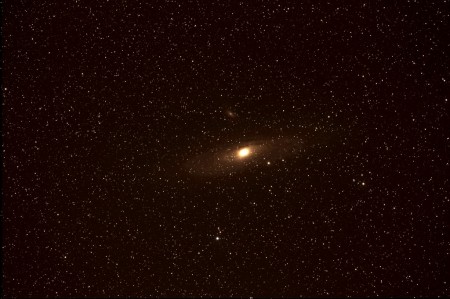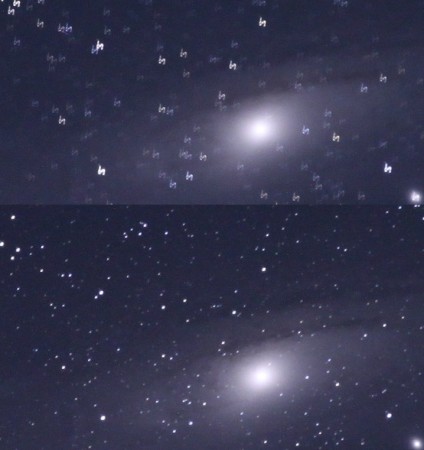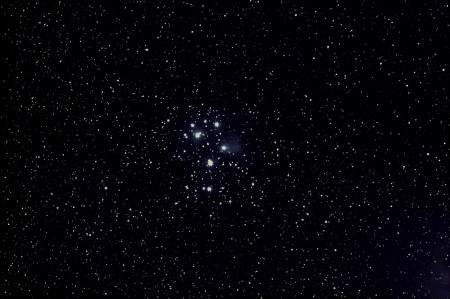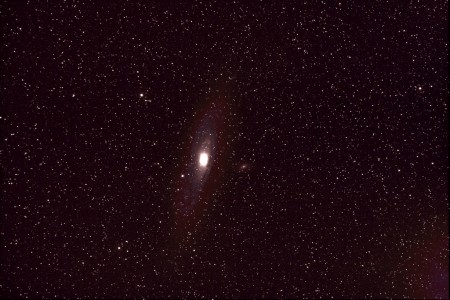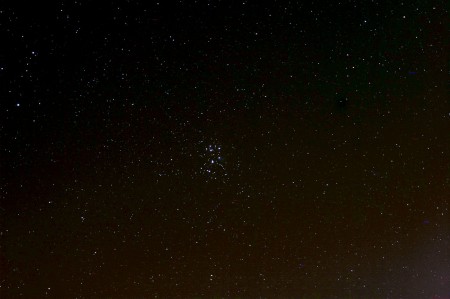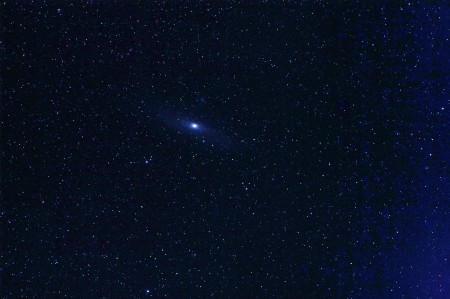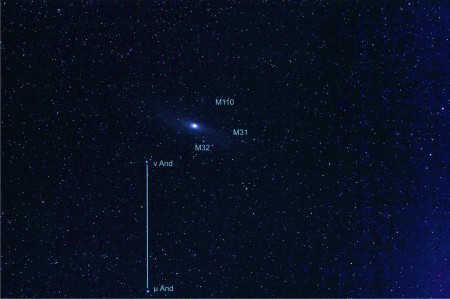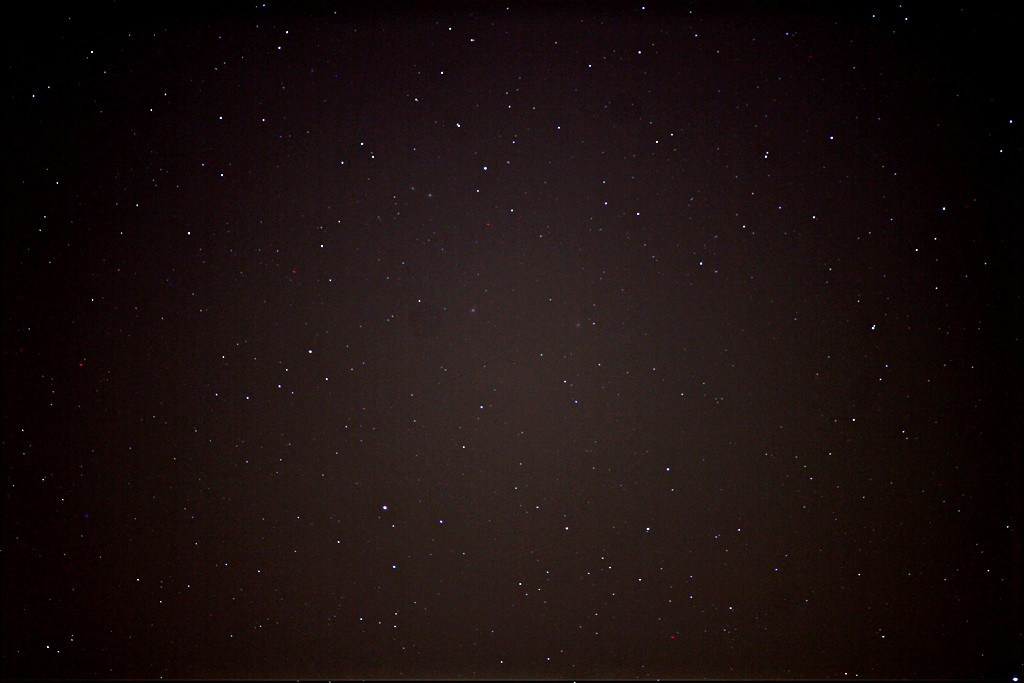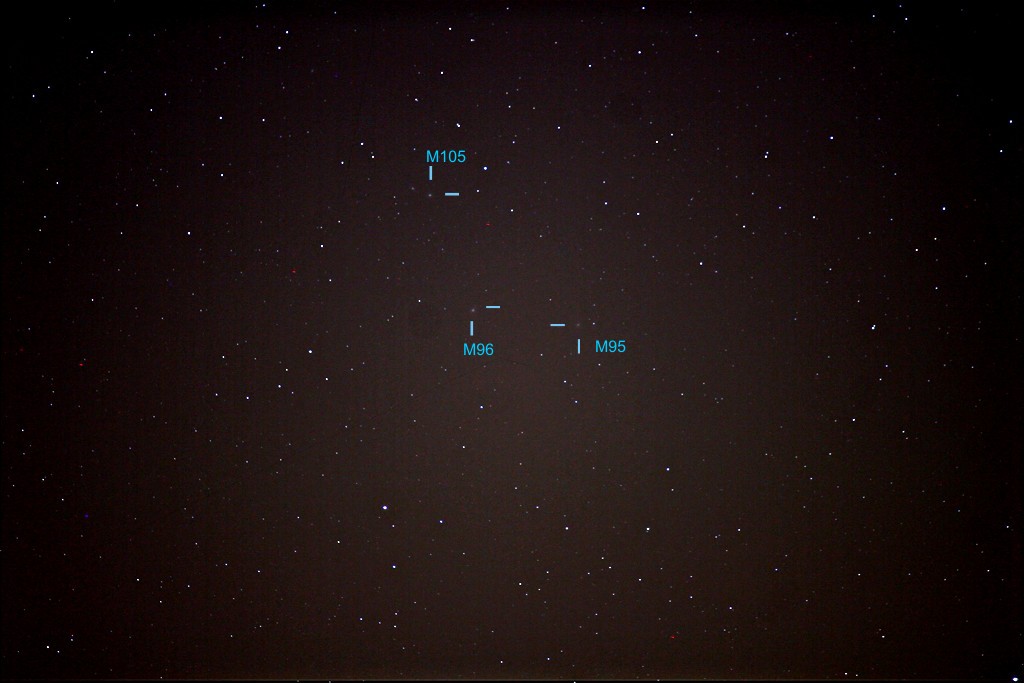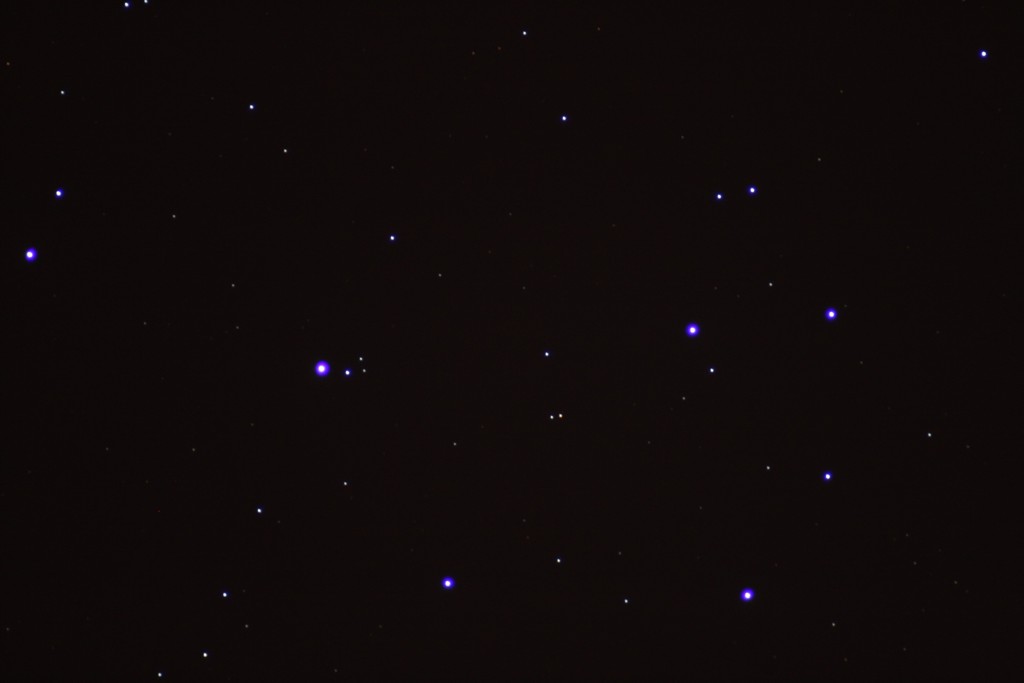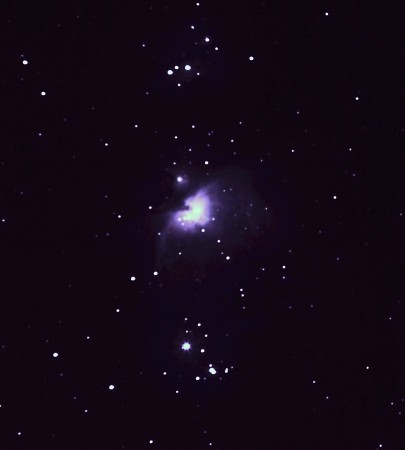
It seems like ages since the skies were clear last time. Must be around 2 months I think. Last evening however was good for astrophotography again. My target was the Orion nebula, or M42.
I took 40 sub-exposures, each 60s long, but half of them were out of focus :(, and a couple of the remaining ones had star-trailing due to vibration or me pushing the mount or something. The end result is a stack of 14 images, so 14 x 60s = 14min total exposure time. There is software out there to help with focusing, I'm looking at Nebulosity in particular. A DewNot dew-heater worked really well, no more problems with dew or frost on the lens.
Canon 20D wtih 70-400/4L lens set to 200mm and F/5.6: Unguided EQ-6 mount. Stacked with DeepSkyStacker with 10 dark frames (no flats or bias frames). The image above is a 100% crop, below is the full frame:
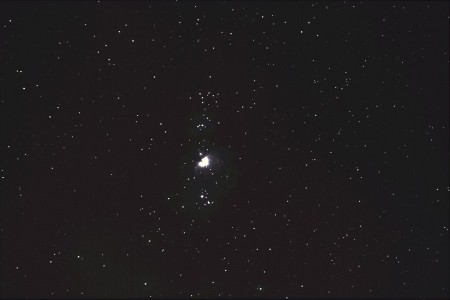
This site is about a 35min drive away. It allows exposing for 1-4 minutes at F/5.6. That's almost good enough, if you look at the "why autoguide" slides of Craig Stark's talk (especially the SNR plot at ca 7:20), it's clear that single exposures of a few minutes are required to reach good SNR.
The noise is supposed to be 1/sqrt(14)=3.7-fold lower in the stack above, but I'm not very impressed by how it looks compared to this single 60s frame:
